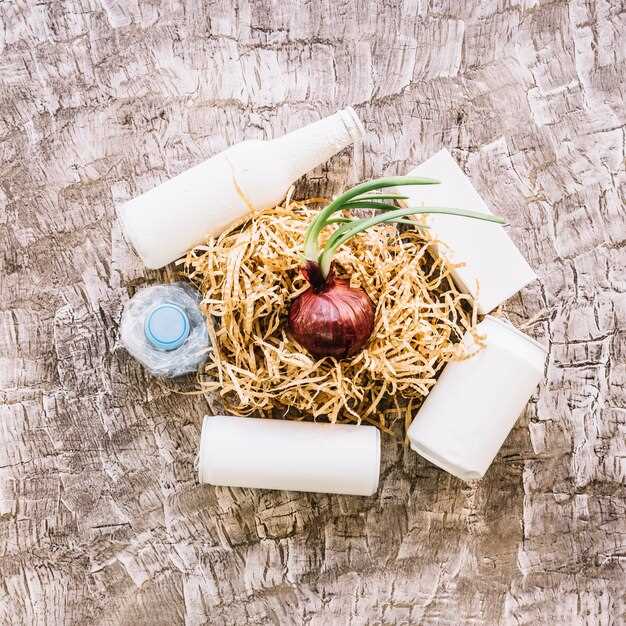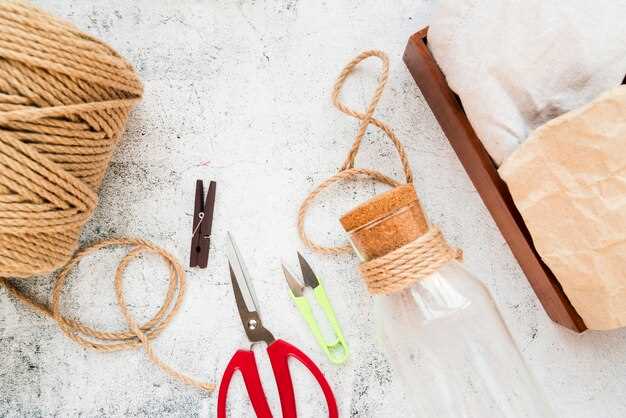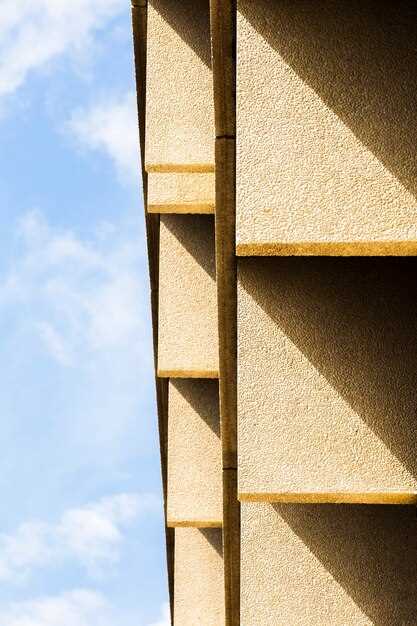Choosing the Right Sustainable Insulation for Your Climate
For homes in temperate regions, cellulose insulation is an outstanding choice. Made from recycled paper products, it effectively reduces energy loss while promoting sustainability. With an R-value of 3.5 to 3.8 per inch, it offers solid thermal performance, ensuring your space remains comfortable year-round.
If you reside in a colder climate, consider using spray foam insulation. This material expands to fill gaps and cracks, creating an airtight seal that prevents heat from escaping. With an R-value ranging from 5.5 to 7 per inch, it can significantly lower heating costs while maintaining indoor comfort during harsh winters.
For homes in hot, dry climates, look to wool insulation. This natural option excels in regulating temperature and minimizing moisture buildup, thanks to its ability to absorb and release humidity. With an R-value of about 3.5 to 4 per inch, it helps keep your home cool in summer while offering warmth in cooler seasons.
Lastly, if you aim for eco-friendly options, evaluate the benefits of hemp insulation. Lightweight and durable, hemp provides excellent thermal and acoustic properties, along with a low environmental impact. With an R-value of around 3.5 per inch, it suits various climates and supports sustainable building practices.
Understanding Climate Zones and Their Impact on Insulation Choices

Identify your climate zone to select the most appropriate insulation. The United States has several climate zones, typically categorized as warm, temperate, and cold. Each zone presents unique needs that affect insulation performance.
Warm Climates
In areas with high temperatures and low humidity, like the southern regions, focus on insulation that reflects heat and minimizes moisture retention. Consider radiant barrier insulation, which can significantly reduce cooling costs by reflecting radiant heat away from living spaces. Opt for fiberglass or foam board with a high R-value for walls, as these materials provide superior thermal resistance against outdoor heat.
Cold Climates
For regions experiencing long, harsh winters, prioritize insulation that retains heat effectively. Spray foam insulation offers excellent air sealing properties and a high R-value, making it an ideal option for exterior walls and attics. Additionally, consider cellulose or fiberglass batts for floors and walls, ensuring adequate thickness to prevent heat loss. Pay attention to moisture control to avoid condensation issues.
Always consult local building codes and energy efficiency programs to ensure compliance with regulations and access potential incentives for using sustainable materials. Assess your specific climate conditions and choose insulation that best meets both environmental standards and your comfort requirements.
Comparing Natural Insulation Materials: Pros and Cons
Choosing the right natural insulation requires understanding their specific advantages and disadvantages. Here’s a breakdown of popular options:
Cotton (Denim Insulation)
- Pros:
- Made from recycled materials, reducing waste.
- Non-toxic and safe for indoor air quality.
- Good thermal performance with an R-value between 3.2 to 3.7 per inch.
- Moisture resistant, limiting the risk of mold.
- Cons:
- Higher cost compared to some synthetic options.
- Less availability in some markets.
- Can be appealing to pests if not treated properly.
Sheep’s Wool
- Pros:
- Excellent moisture management and breathability.
- Natural fire resistance.
- Durable with a good R-value around 3.5 to 4.0 per inch.
- Biodegradable and environmentally friendly.
- Cons:
- Generally more expensive than other insulation materials.
- Requires specific installation techniques to ensure effectiveness.
- Can be prone to moth infestations if not treated.
Hemp Insulation
- Pros:
- Lightweight with a good R-value around 3.5 per inch.
- Highly resistant to mold and pests.
- Carbon negative, absorbing more CO2 than produced during its lifecycle.
- Cons:
- Availability may be limited depending on region.
- Installation can be tricky without proper expertise.
- Higher price point compared to traditional options.
Each natural insulation material brings unique benefits and potential drawbacks. Assessing the specific needs of your project, including climate conditions and budget, ensures the best choice for sustainable insulation.
Evaluating R-Values for Different Insulation Types
Start by considering the R-value, a measure of thermal resistance. It’s crucial when selecting insulation. Higher R-values indicate better insulation performance. For instance, fiberglass batts typically offer R-values between 2.9 to 3.8 per inch, making them a common choice for attics and walls.
Next, explore spray foam insulation. Closed-cell spray foam achieves R-values around 6 to 7 per inch, providing outstanding air sealing alongside insulation. This option suits areas with extreme weather conditions, where energy efficiency remains a priority.
Mineral wool, with R-values from 3.1 to 4.2 per inch, provides excellent fire resistance and soundproofing. It’s a solid choice for buildings requiring both thermal and acoustic performance, especially in multi-family units.
Cellulose insulation, made from recycled paper, boasts R-values of about 3.2 to 3.8 per inch. It’s eco-friendly, making it appealing for sustainable builds. However, ensure it’s properly installed to prevent settling over time.
Lastly, consider rigid foam board, which can offer R-values from 4 to 6.5 per inch, depending on the type. This insulation works well in foundation walls and areas where space is tight.
Choose insulation types based on their R-values alongside your climate needs. Higher R-values provide better performance, but cost, installation ease, and environmental impact also play vital roles in your decision-making process.
Identifying Local Climate Challenges for Insulation Selection
Analyze the temperature range in your area. For regions with severe winter cold, select insulation materials that provide high R-values, which indicate thermal resistance. In warmer climates, opt for materials that allow for better airflow, preventing overheating and moisture buildup.
Evaluate humidity levels. Areas with high humidity require insulation that can manage moisture effectively, reducing the risk of mold. Materials like mineral wool and fiberglass have good moisture resistance. Conversely, extremely dry climates benefit from insulation that limits air infiltration.
Consider local weather patterns. If your region experiences frequent heavy rains or snow, choose moisture-resistant insulation. Closed-cell spray foam performs well in such conditions, preventing water penetration and maintaining insulating properties.
Assess potential natural disasters. In areas prone to hurricanes, opt for durable materials that provide structural integrity. Insulation products tested for wind-driven rain or high winds ensure long-term performance and safety.
Account for local energy costs. In colder regions, investing in higher R-value insulation can reduce heating expenses significantly. For warmer climates, lightweight thermal insulation can minimize cooling costs. Tailor your insulation choices to align with energy efficiency goals specific to your location.
Review available insulation alternatives. Research local manufacturers and eco-friendly options that suit your climate. Sustainable choices, such as cellulose or sheep’s wool, can provide both comfort and reduced environmental impact in diverse weather conditions.
How to Assess the Environmental Impact of Insulation Materials
Evaluate insulation materials based on lifecycle analysis (LCA). This method examines environmental impacts from raw material extraction through manufacturing, use, and disposal. Look for LCA studies specific to the materials you consider, highlighting energy consumption, greenhouse gas emissions, and resource depletion.
Consider Material Sourcing
Research the origin of the insulation materials. Opt for products made from renewable resources or recycled materials, as these have a lower environmental footprint. Local sourcing reduces transportation emissions, further decreasing environmental impact.
Examine Performance and Durability
Assess the insulation’s thermal performance and longevity. Materials that provide excellent insulation reduce energy usage in heating and cooling, which contributes to lower emissions over time. Select durable materials that require minimal maintenance or replacement to minimize waste.
Investigate end-of-life options. Choose insulation that can be recycled or safely disposed of, thus preventing landfill accumulation. Understanding the entire lifecycle equips you with the necessary knowledge to make informed, sustainable choices.
Installation Considerations for Sustainable Insulation Products
Assess your building’s design before choosing sustainable insulation. Pay attention to factors like wall thickness and available space for installation. Some materials, like cellulose or sheep’s wool, require more space compared to rigid foam boards.
Inspect moisture levels in your structure. Products like fiberglass perform poorly in humid environments, while mineral wool excels by resisting moisture absorption. Properly sealing any air leaks enhances their performance.
Select materials based on local climate conditions. For instance, for colder regions, consider products with high R-values, such as spray foam or fiberglass batts. In warmer climates, opt for materials that allow for ventilation and breathability, like cellulose or cotton.
Ensure proper installation techniques are followed. For example, leave an air gap when installing cellulose insulation to avoid settling over time. Layering insulation can assist in achieving desired thermal resistance and manage soundproofing effectively.
Utilize sustainable practices during installation. Use low-VOC adhesives and sealants to maintain indoor air quality. Recycling old insulation materials, when possible, contributes to waste reduction.
After installation, perform an energy audit to verify insulation effectiveness. Address any discrepancies immediately to optimize energy savings and comfort in your space.
Understanding the Role of Air Sealing in Insulation Performance
Prioritize air sealing before adding insulation to enhance energy efficiency. Tightening up your building envelope prevents unwanted drafts and heat loss, making your insulation work more effectively.
Consider these key points when focusing on air sealing:
- Identify Gaps: Inspect areas around windows, doors, and electrical outlets for cracks or holes. Use caulk or weather stripping to seal small gaps.
- Evaluate Attic Access: Attic hatches often allow significant air leakage. Sealing these entrances can minimize heat transfer.
- Seal Ducts: Unsealed ducts can leak air, reducing heating and cooling efficiency. Use mastic sealant or metal tape to properly seal duct joints.
Pay attention to the materials used. Select high-quality sealants that have a longevity guarantee to ensure lasting performance in air sealing:
- Foam Sealant: Expands to fill gaps, providing an excellent barrier against airflow.
- Weather Stripping: Available in various materials; choose one that suits the specific application (e.g., tape, V-strip, or door sweeps).
Regular maintenance checks of your sealed areas help maintain optimal insulation performance. Keep an eye out for wear and tear, especially after severe weather changes.
Integrating air sealing practices with your insulation strategy increases comfort levels. A well-sealed home not only retains heat in winter but also keeps it out during summer, enhancing year-round energy performance.
Energy Savings Calculations for Various Types of Insulation
Choosing the right insulation can lead to significant energy savings. For example, fiberglass insulation typically offers an R-value of 2.9 to 3.8 per inch. Calculating energy savings involves determining the insulation thickness and the square footage of the space. Using a home with 1,500 square feet and an average heating cost of $1,200 annually, upgrading to fiberglass can save approximately $150 each year.
Foam board insulation provides a better R-value, estimated between 4.0 and 6.5 per inch. For the same 1,500-square-foot home, installing 2 inches of foam board can yield annual savings of about $200, considering the increased air sealing benefits associated with foam materials.
Cellulose insulation, made from recycled paper, offers an R-value of about 3.2 to 4.0 per inch. This option can lead to energy savings around $160 per year for a typical home, primarily due to its natural ability to reduce air leakage.
Spray foam insulation stands out with an R-value ranging from 5.0 to 6.5. For homeowners, applying 3 inches of spray foam could result in savings of $300 annually, given its superior air sealing properties that minimize energy loss drastically.
Mineral wool insulation delivers an R-value of 3.0 to 4.0. It can yield annual savings of around $140 based on standard heating costs and thickness. This option also benefits from fire resistance, adding safety to energy efficiency.
Assessing long-term savings over a 10-year period, choosing spray foam over fiberglass could save homeowners up to $1,500, considering both energy costs and lower heating and cooling demands. Evaluate your specific climate zone to tailor insulation choices that maximize savings effectively.
How to Choose Insulation for Different Spaces in Your Home
For attics, use fiberglass batts or blown cellulose. Both materials provide excellent thermal resistance and reduce heat loss during winter while keeping spaces cool in summer. Ensure proper ventilation to prevent moisture buildup.
In walls, opt for spray foam insulation for superior air sealing and energy efficiency. It expands to fill gaps, minimizing drafts. Alternatively, mineral wool offers soundproofing benefits and fire resistance, making it suitable for multifamily buildings.
For basements, focus on rigid foam board insulation. It wards off moisture while maintaining thermal performance. Consider installing a vapor barrier to protect against dampness. Combine wall insulation with proper drainage systems for best results.
In crawl spaces, use fiberglass or foam board insulation. Ensure it’s properly placed to prevent moisture issues and maintain energy efficiency. Seal gaps to keep pests and air leaks at bay.
Garages can benefit from batt insulation,either fiberglass or mineral wool, between the studs. This helps regulate temperature and reduce noise. Paying attention to the garage door insulation will also enhance overall performance.
Soundproofing needs in home offices or media rooms can be addressed with mineral wool or acoustic foam panels. These materials effectively diminish noise transmission, creating a quieter environment.
Research local climate considerations when selecting insulation. Different regions may have specific moisture levels or temperature swings that will influence material choice.
Resources for Finding Certified Sustainable Insulation Suppliers
Utilize directories such as the Green Building Council to locate certified suppliers. This platform lists manufacturers committed to sustainable practices. Check their database for insulation-specific categories.
The Insulation Contractors Association offers a searchable directory of members who comply with green standards. Focus on targets like energy efficiency and eco-friendliness when reviewing options.
Visit the EcoLogo or FSC websites to identify manufacturers with verified sustainable certifications. These organizations maintain lists of companies whose products meet rigorous environmental standards.
Attend local green building expos or trade shows. These events feature suppliers showcasing sustainable insulation products, providing opportunities for direct engagement and networking.
Explore online marketplace platforms dedicated to sustainable products. Websites like EcoBuildingPulse and GreenHomeGuide provide curated lists and reviews to simplify your search.
Consult with local environmental organizations. Many have partnerships with eco-friendly suppliers and can recommend reliable resources for sustainable insulation materials in your area.
Finally, engage with online forums or communities focused on green building. Members often share experiences and recommendations about suppliers, allowing you to gather insights from various perspectives.
Case Studies: Successful Sustainable Insulation Projects by Climate
Analyze successful projects to identify the best sustainable insulation materials tailored for specific climates. Each case study showcases innovative approaches that maximize energy efficiency and comfort.
Cold Climates: Superior Insulation with Cellulose
A residential project in Anchorage, Alaska, utilized cellulose insulation, achieving a remarkable R-value of 3.8 per inch. The homeowners successfully reduced their heating costs by 35% in the first winter. Cellulose, made from recycled paper, provides excellent thermal resistance as well as moisture control, making it ideal for cold temperatures.
Hot and Humid Climates: Reflective Insulation Solutions
In Miami, Florida, a mid-rise apartment complex implemented reflective insulation in its roof system. This material reduced indoor temperatures by 5–10°F during peak summer months, significantly lowering the air conditioning load. The project showcased the effectiveness of radiant barriers in hot and humid environments, promoting cooling efficiency.
| Climate Type | Insulation Material | Benefits | Project Location |
|---|---|---|---|
| Cold | Cellulose | High thermal resistance, moisture control | Anchorage, Alaska |
| Hot and Humid | Reflective Insulation | Reduces indoor temperature, promotes energy efficiency | Miami, Florida |
| Temperate | Mineral Wool | Fire-resistant, soundproofing | Portland, Oregon |
In a temperate zone project in Portland, Oregon, mineral wool insulation highlighted its fire resistance and soundproofing qualities. Residents experienced significant noise reduction from external disturbances, enhancing their living environment. These specific materials used in varied climates demonstrate the alignment of insulation choices with regional conditions for optimal results.
Video:
Materials Health and Sustainability – Insulation
Materials Health and Sustainability – Insulation by UGREEN_US 4,603 views Streamed 3 years ago 1 hour, 36 minutes
Q&A:
What are the best insulation materials for a humid climate?
In a humid climate, choosing insulation materials that resist moisture is critical. Closed-cell spray foam insulation is a popular choice because it creates an effective barrier against both air and moisture. Other suitable materials include rigid foam insulation and fiberglass batts with a vapor barrier. It’s also worth looking into mineral wool insulation, as it can resist moisture absorption and provides good thermal performance. Additionally, ensuring proper ventilation in the building structure can help maintain the effectiveness of any insulation used.
How do I determine the right insulation for my specific climate zone?
To find the right insulation for your climate zone, start by reviewing the climate classification in your area, which typically falls into one of several categories: cold, temperate, hot, or mixed. Each zone has unique requirements for insulation types and R-values (a measure of thermal resistance). For colder regions, materials like cellulose or fiberglass are often recommended, while warmer climates benefit from reflective insulation or radiant barriers. Local building codes and regulations can provide further guidance and ensure compliance with energy efficiency standards.
What are the long-term benefits of using sustainable insulation?
Using sustainable insulation can lead to significant long-term benefits, both environmentally and economically. Environmentally, sustainable materials typically have a lower carbon footprint, are made from renewable resources, and contribute less to landfill waste. Economically, while sustainable insulation materials might have a higher initial cost, they often result in lower energy bills over time due to improved thermal performance. Additionally, they can enhance comfort in the home and increase its resale value, making them a worthwhile investment for future homeowners.
Can I install sustainable insulation myself, or should I hire a professional?
While some types of sustainable insulation, like batt insulation, can be installed by DIY enthusiasts with the right tools and knowledge, others, such as spray foam or rigid foam boards, may require professional installation. This is often due to the need for specialized equipment and techniques to ensure proper sealing and effectiveness. If you decide to go the DIY route, be sure to follow all safety precautions and installation guidelines. Hiring a professional can provide peace of mind and ensure the insulation performs optimally in your home.

















